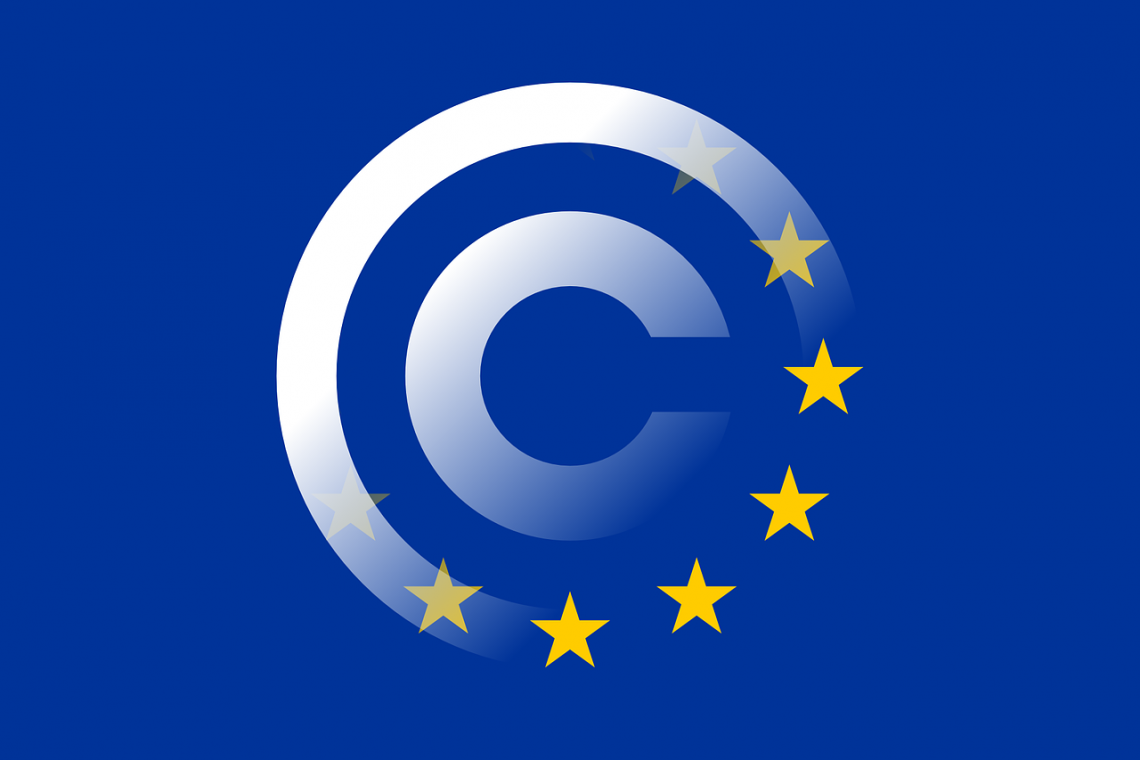The new European Copyright in the Digital Single Market Directive has taken effect on 7 June 2019 (Directive 2019/790). The Directive includes some important new obligations, such as for online content platforms that host user uploaded content. This Whitepaper discusses the biggest changes relating to article 17 of the Directive: the value gap or the ‘uploadfilter’.
Uploadfilter or Value Gap
In the run-up to the final version a lot was said and written about article 17 (article 13 in previous versions).
Some referred to the article as the ‘uploadfilter’ because it requires platforms to filter content uploaded by users. Although this should be nuanced somewhat, the qualification does have merit. Content platforms are not necessarily obligated to filter content, they can also try to obtain authorisation form rights holders. In practice this will be very difficult however.
‘Value gap‘ describes the financial discrepancy between copyright owners and large platform providers that host and commercialise their content. Platform providers, such as YouTube or Facebook, generate high advertising revenues with user content on their platforms. This content (primarily music and audio-visual entertainment content) is often copyright protected and uploaded without authorisation of the rights holders. As a result, rights holders miss out on exploitation revenue: their work is accessible without any remuneration.
Article 17 aims to fix this by making changes to the responsibility and liability of platforms towards rights holders. It seeks to force the parties to conclude license agreements.
Changes to online platform liability
Prior to introduction of the Directive, content platforms were normally not considered to perform any act relevant under copyright law. It is their users that upload content. So the provider did not need to request prior authorisation from rights holders. Also, platforms were not liable for infringing content, as long as they were unaware of the infringement and removed the content as soon as they did become aware (notice-and-takedown). This safe harbour-regime follows from article 14 of the European E-Commerce Directive (Directive 2000/31, implemented in the Netherlands in article 6:196c of the Dutch Civil Code).
The situation will be different under article 17 of the new Directive. Making available protected content uploaded by users will be regarded an act of communication to the public by the platform itself. Thus, the platform will commit copyright infringement if authorisation has not been obtained from all rights holders to the content. Content platforms will only be able to avoid this if several obligations have been met.
What are the new rules?
Prior authorisation
Authorisation may be obtained by concluding a license agreement with the relevant rights holders. Concluding license agreements with all relevant rights holders will however prove very difficult in practice. Often, it will be unclear even which parties can potentially claim rights. For music, licences will be easier to obtain because the rights will largely be managed by collective management organisations. For video content though, where the earnings model is based on exclusivity, it will be nearly impossible.
Under the Directive, a provider may nonetheless offer an online content platform without authorisation if the following three conditions are met.
Obligations if no authorisation can be obtained
1 – The content platform has properly made best efforts to obtain authorisation. How this best-efforts obligation is to be satisfied is unclear. Platforms do not, however, have to agree to every offer by rights holders. Rights holders must apply fair, reasonable and non-discriminatory conditions for their licences;
2 – The content platform has properly made best efforts to ensure unavailability of infringing content. The precise scope of this obligation is also unclear. Presumably, content platforms will be forced to use some sort of filter. Rights holders will have to furnish the necessary information (such as content fingerprints) to actually enable the platform provider to filter content;
3 – in any case, the content platform must act expeditiously to remove infringing content or make it inaccessible. The provider will have to implement an effective mechanism for removing infringing content. If there is an infringement, the content must not only be removed promptly after a notice (notice-and-take down), but it must also stay removed (notice-and-stay down).
Complaints procedure
The filter obligation may result in certain content wrongly being made inaccessible (automatically or not), for instance if a copyright exception applies such as the parody or quotation exception. Users must therefore have the opportunity to submit a complaint against the removal of permissible types of content use. Hence, the Directive requires content platform providers to implement an effective complaints procedure.
Terms and conditions
Finally, platform providers must inform their users in their general terms and conditions about the existence of copyright limitations, in order to safeguard their right to free expression.
Do these obligations apply to you?
General rule
Article 17 applies to “online content-sharing service providers”, of which the main or one of the main purposes is to store and give the public access to large amounts of copyright-protected works uploaded by its users.
It can be argued that platforms whose main purpose is to host user created content do not fall within scope. Think for instance of Instagram, of which the main purpose is to host photographs made by users themselves. Then what to think of musicvideo app TikTok? This app combines user created content (the video’s) with user uploaded content (the music).
Examples of copyright-protected works include literature, photographs, films, music, games and news articles. But other works, such as product descriptions, presentations, educational materials, recipes, instructions and manuals, can be protected as well.
The exact meaning of “large amounts” is not clear. In our opinion however, courts will probably not be very strict on this requirement. They will also take into account the specific type of content in question. If the platform makes money off the content and the amount and type of content is such that obtaining licenses is economically justified, it will most likely be caught by the Directive.
The article only applies if the content platform organises and promotes the content for profit-making purposes.
Exceptions
Article 17 applies to a limited extent to “new” content platforms. New platforms are platforms that have existed for less than three years and have an annual turnover below 10 million. The filter obligation mentioned under 2 above does not apply in that case. Depending on the number of unique visitors in the EU, an notice-and-take down procedure or, in addition, a notice-and-stay down procedure are required.
Non-profit encyclopaedias (Wikipedia), not-for-profit scientific or educational repositories, providers of electronic communication services (such as internet access providers and telecom providers), online retail marketplaces (eBay) and certain cloud services such as cyberlockers are explicitly exempted.
What if article 17 does not apply?
If a platform is not a “platform provider” or can invoke the exceptions mentioned above, the existing legal framework applies. The platform provider may be able to invoke the safe harbour clause in the European E-Commerce Directive.
Implementation into Dutch national law
On 2 July 2019 a consultation was published for implementation of the new rules into Dutch law. On 11 May 2020 the final legislative proposal was submitted. Read more on it in this blog.
The wording of Article 17 contains many open norms that leave room for interpretation. The Dutch legislator did not elaborate on the open norms, as was the request by most stakeholders in the consultation. Much will eventually have to be interpreted by the European Court of justice.
The Dutch legislator also wants to await guidelines from the European Commission following from discussions on best practices with stakeholders. The aim of the guidelines is to formulate agreements on the cooperation between rights holders and content platform providers. The legislative proposal enables the Dutch minister to convert these guidelines into Governmental Decrees (“AMvB”).
Stakeholder dialogues (recordings and presentations available)
Up until 20 February 2020 six stakeholder dialogues have taken place. Two sessions were used to map current collaboration between providers and rights owners and users’ perspective on this collaboration (here and here).
During the next two sessions, stakeholders gave presentations on the current working method for licensing and content identification technologies (here and here).
In the fifth session, stakeholders discussed the practical elaboration of the best practice to obtain authorisation from rights holders, and how to avoid unauthorised content.
The sixth session was used to discuss the safeguards for legitimate use and redress mechanisms for users.
Implementation by the UK in light of Brexit?
On 31 January 2020, the United Kingdom left the EU and Brexit became a fact. The British government announced on 21 January 2020 that it does not intend to implement the new European Copyright Directive. At this point, it is still unclear whether the government will decide to include similar national provisions. It is possible that there will be a big discrepancy between the regulations in the UK and the EU.
Next steps
- The European Commission will publish guidance on article 17, which is under consultation untill 10 September 2020.
- The Dutch legislative proposal is still to be debated in the House of Representatives (Tweede Kamer). You can find all current legislative documentation here.
- The Directive must be implemented by all Member States by 7 June 2021 at the latest. Its impact may vary from one Member State to another. This must be taken into account if a platform is active in several Member States.
What can you do?
Content platforms and rights holders can still try to influence the new rules by lobbying on the national level. Of course, if you are a smaller party, it will be difficult to get your point across over heavy lobbying by big platforms and rights holders organisations.
In preparing for the new legislation, content platforms can start by asking themselves the following questions:
- Do we fall in scope of the Directive? Especially, do we mainly focus on hosting and providing access to user uploaded (not: user created) content?
- Can we rely on one of the exemptions?
- Whose authorisation do we need for the content on our platform?
- Is there a collective management organisation that manages the rights?
- Is there a viable option to filter content?
This work is licensed under a Creative Commons Attribution-NonCommercial 4.0 International License.


